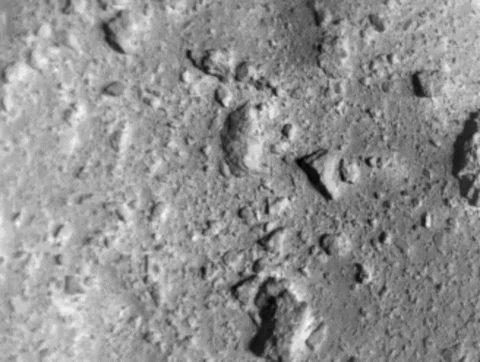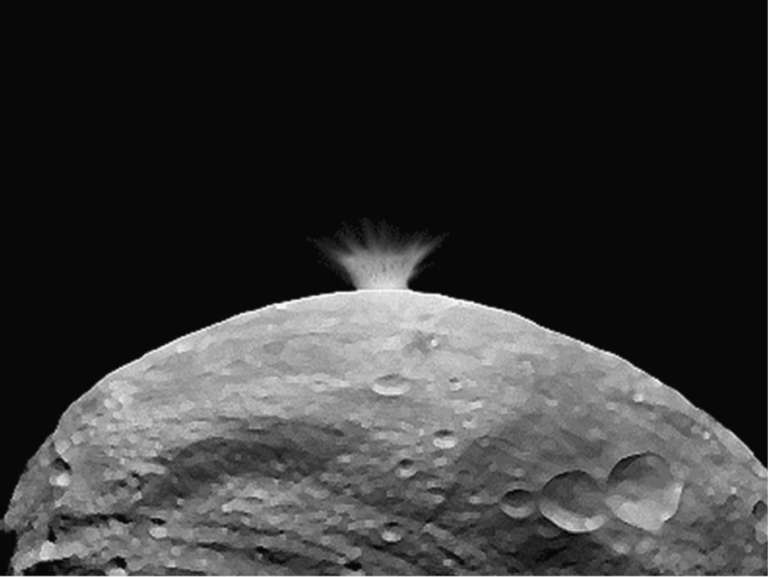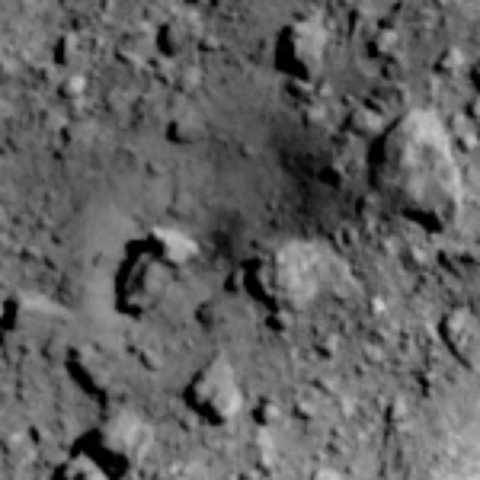Jason Davis • May 03, 2019
Here’s an Update on Hayabusa2’s Crater-Creating Explosion
We already knew that Hayabusa2 successfully fired a copper plate into asteroid Ryugu, and that the spacecraft found the resulting crater on 25 April. Now, thanks to a newly translated JAXA press briefing, English speakers have a few more details about how the ambitious operation went.
Hayabusa2, Japan's mission to Ryugu and other asteroids
Hayabusa2 traveled to the asteroid Ryugu, deployed rovers on its surface, and brought samples back to Earth.
Hayabusa2 imaged its explosive-packed SCI experiment after deployment on 5 April with both thermal and optical cameras. JAXA says SCI separated from Hayabusa2 at about 20 centimeters per second, fell towards Ryugu for 40 minutes, and detonated about 300 meters above the surface. A detail I found particularly fascinating was that due to Ryugu's 7.6-hour rotation period, Hayabusa2 had to drop SCI about 30 degrees east of its target region!

After deploying SCI, Hayabusa2 fled behind Ryugu to avoid any debris from either the explosive device itself or material flying off the surface. The spacecraft was about 1 kilometer to the west and 3.5 kilometers behind Ryugu when detonation occured. DCAM3, the small camera Hayabusa2 left behind to watch the explosion and relay pictures, worked exactly as planned. Its analog camera worked for 20 minutes and captured 500 images before the battery ran out, while the digital camera worked for 3 hours and 20 minutes.
Compare this image from the digital camera with a 2017 rendering of what scientists thought it might look like. Not bad:


After the SCI detonation, Hayabusa2 flew on a long, looping track that took it more than 100 kilometers from Ryugu. JAXA confirmed the spacecraft returned to its 20-kilometer home position on 20 April, and on 23 April it began descending to a height of just 1.6 kilometers to search for the crater it made. The crater ended up being easy to find!

The area affected by the blast is roughly 20 meters wide—much bigger than JAXA scientists expected it to be. "We did not expect such a big alternation so a lively debate has been initiated in the project!" the Hayabusa2 Twitter account reported.
JAXA is now considering whether to collect a second sample for return to Earth, either from the newly created crater or a different location. That sample collection wouldn't happen until June or later. The spacecraft is set to leave Ryugu in November or December 2019, and return to Earth in late 2020.
The Time is Now.
As a Planetary Defender, you’re part of our mission to decrease the risk of Earth being hit by an asteroid or comet.
Donate Today

 Explore Worlds
Explore Worlds Find Life
Find Life Defend Earth
Defend Earth


